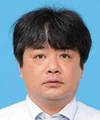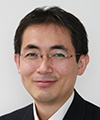 |
|||||||
|
|
|||||||
|
Feature Articles: The Challenge of Creating Epoch-making Services that Impress Users Vol. 13, No. 7, pp. 28–32, July 2015. https://doi.org/10.53829/ntr201507fa6 Creating Omotenashi Services for Visitors and Spectators in 2020AbstractNTT Service Evolution Laboratories is working to develop services for people from both within and outside the country who will visit various places in Japan. This includes the spectators and organizers who will be in Tokyo for the 2020 Olympic and Paralympic Games. This article describes four conceptual Omotenashi services that will be available on smartphones and tablets to provide people with spectator and transportation assistance. Keywords: service concepts, PoC, epoch-making 1. IntroductionWhat we aim to do is to provide new ICT (information and communication technology) services to give positive and memorable experiences and impressions to people from all over the globe, including the spectators and organizers of the 2020 Tokyo Olympic and Paralympic Games. The four conceptual services described here employ media technologies to deploy new services to assist not only those who will be attending the Games but also those who organized them. 2. Travel support service through multilingual translation and location identificationThe first service is intended to enable visitors to Japan to use transportation facilities smoothly and with a minimum of problems. It will provide collected and selected information on locations and other factors that will help people reach their destination by making suitable transportation connections or taking detours to avoid traffic congestion or blockages due to accidents. The service will also use image recognition and location prediction functions to collect and provide information that visitors will need. The service’s translation function will enable visitors to receive the information on their smart devices in English, Chinese, and Korean (Fig. 1) [1].
The service will enable visitors to use their smart devices to take photos of information displayed on signboards and other places, after which the device will show them the right way to go in order to reach their destination. They will also be able to get pictorial information about special requirements such as those for disabled persons or people traveling with children. Urgent messages such as wrong-way warnings and emergency alerts will be issued as needed. 3. Personalized navigation service through object recognitionThe second service will allow visitors to use their smart devices to recognize objects around them to guide them. NTT’s proprietary recognition technology rapidly and robustly extracts 3D (three-dimensional) objects, after which the service tailors the object information to individual users on the basis of factors such as their age, gender, language, location, and travel history, as well as on the actions and preferences of similar users. This enables visitors to obtain personalized, interesting, and useful tourist information on what they are watching or looking at (Fig. 2) [1].
The service will provide visitors with personalized guide information on tourist spots on the basis of, for example, their cultural backgrounds. It will also provide them with personalized instructions on dealing with heavy crowds at stadiums or auditoriums on the basis of their preferences, and personalized information to navigate them to booths at exhibitions and to stores in shopping streets or malls. 4. Personalized information service through subject identificationThe third service will instantly provide visitors with information on Japanese food and other goods to meet their needs and preferences. This service combines extended SightX [2] technology with the subject identification function and will enable visitors to more fully enjoy their stay in Japan. Once a picture of various foods and goods is taken by a visitor’s smart device, it can be easily identified as subjects in an image database that can be put together with minimal effort. The result the database provides will be composed from related information on the Internet that is personalized according to the visitors’ preferences, cultural backgrounds, and other factors. If the information is available only in Japanese, it will be translated into the visitor’s language (Fig. 3) [1].
The service provides explanations about food in restaurants and goods in stores in the visitor’s language. It will also give further related information including the history, cultural backgrounds, and habits of these items if visitors desire. It also shows ingredients and allergens in foods for those concerned about health, dietary, and regional restrictions, and gives opinions on the dishes and any trending information about them. 5. Personalized sports spectating through information on selected athletesThe fourth service will provide timely information about a selected athlete on a smart device in a selected language. The information includes images automatically gathered from the Internet and social media by using CGM (consumer generated media) Automatic Zapping and organized according to scenes. Organizers of sports events can archive and edit the uploaded content and the images in it to use them as further business resources even after the sporting event has ended (Fig. 4). The service will enable spectators along a marathon race course, for example, to watch video images of a selected runner from the viewpoints of other spectators at different locations along the course.
6. Future workThis article described four conceptual services targeted for use in 2020. For the next step, we hope to work with partners in the transportation and tourism industries to achieve co-innovation, that is, to implement real services with partners and users through service trials executed for proof of concept (PoC) purposes. Development and trial environments (XFARM [2], GEMnet [3]) will be prepared and improved to carry out the trials. Our objective will be to provide advanced and impressive services by executing the quick create-test-demolish cycle for proposing service concepts and their PoC. References
|
|||||||










